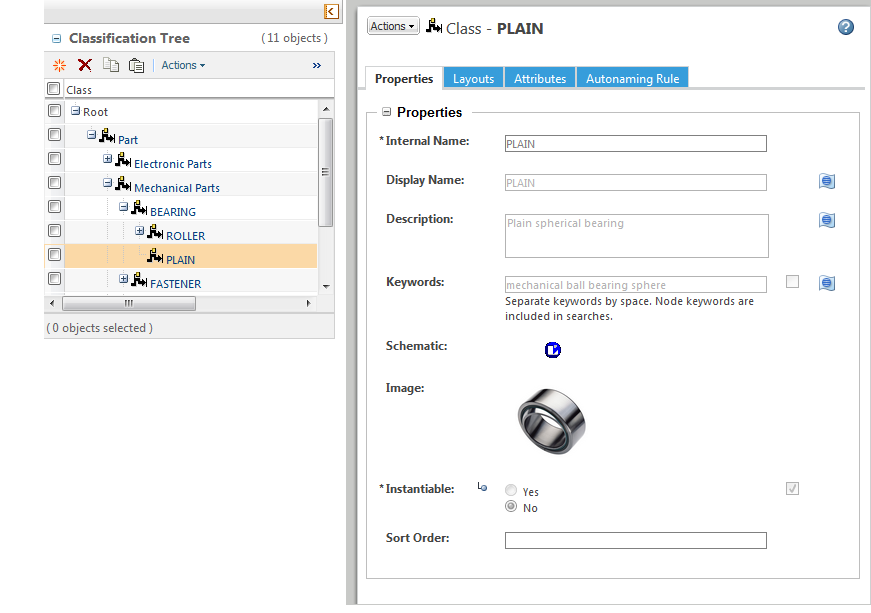Classification Nodes
Classification nodes (or “classes”) are the building blocks of the classification structure:

Each node has various attributes and properties defined. The node essentially serves as a template for creating a classified object. When you create a classified object, the classification node is a starting point from which you can add or remove attributes.
Objects can be classified as belonging to one or more nodes of the classification hierarchy. An object can be associated with a classification node even if it has a different set of attributes than the node template.
When specifying node attributes, use unique attributes for the purposes of classification. Do not use the same attribute on a classification node and an object type. |
For example, your system contains many parts; some parts represent various cylinders, and other parts represent roller bearings. When working with a roller bearing, you want to know the number of rollers, the lubrication used, and the static load rating. However, when working with cylinders, those attributes are not important. Instead, you only want to know the height, diameter, and surface area.
You can create a classification node to represent cylinders, and another to represent roller bearings. Each node has different attributes defined. When a user creates a new part to represent a cylinder, they select the cylinder classification node. They can then provide only those values applicable to cylinder attributes.
For information about the terminology used, see Windchill PartsLink Terminology. |